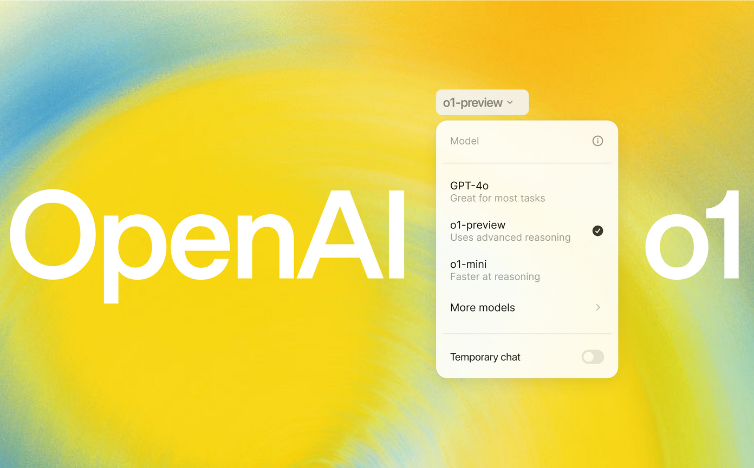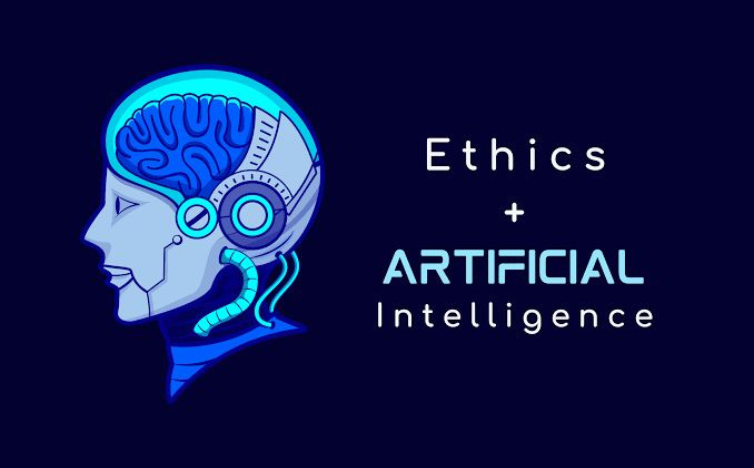Artificial Intelligence (AI) is no longer a futuristic concept—it’s an integral part of our daily lives. With OpenAI’s recent launch of the o1 Model, the landscape of AI development is shifting yet again. This new model not only marks a significant milestone for OpenAI but also offers insights into the company’s evolving strategy and vision. For tech enthusiasts, business leaders, and developers alike, understanding these changes is crucial for staying ahead in the AI game.
In this blog post, we will explore the intricacies of OpenAI’s o1 Model, its implications for the AI industry, and how it aligns with OpenAI’s long-term goals. You’ll gain a comprehensive understanding of the innovative features of the o1 Model, the strategic shifts within OpenAI, and what this means for the future of AI.
Table of Contents
The Significance of OpenAI’s o1 Model

A Leap in Technological Advancements
The o1 Model represents a significant leap in AI technology. Unlike its predecessors, this model boasts improved natural language processing (NLP) capabilities, allowing it to understand and generate human-like text more accurately. This advancement could revolutionize various sectors, from customer service chatbots to advanced data analytics.
Enhanced Efficiency and Speed
One of the standout features of the o1 Model is its enhanced efficiency and speed. The model has been optimized for faster processing, which means it can handle larger datasets and more complex queries in a shorter amount of time. This improvement is particularly beneficial for businesses looking to integrate AI into their operations without sacrificing performance.
Cost-Effectiveness
OpenAI has also focused on making the o1 Model more cost-effective. By optimizing the model’s architecture, they have reduced the computational resources required for its operation. This cost reduction makes advanced AI more accessible to smaller businesses and startups, democratizing the technology.
See Also: 11 Best AI Writing Generators
OpenAI’s Evolving Strategy
OpenAI is committed to adapting its strategies in response to the dynamic AI landscape. The introduction of the o1 Model highlights a focus on ethical practices and collaborative efforts, positioning the company as a leader in responsible AI development.
Focus on Ethical AI
OpenAI has always been committed to ethical AI development, and the o1 Model is no exception. The company has implemented new safety protocols and guidelines to ensure that the AI operates within ethical boundaries. This focus on ethical AI is a strategic move to build trust and credibility in an increasingly skeptical market.

Collaborative Efforts
Another notable shift in OpenAI’s strategy is its emphasis on collaboration. The launch of the O1 Model aligns with multiple partnerships involving top tech companies and academic institutions.These collaborations aim to foster innovation and accelerate the development of next-generation AI technologies.
Open-Source Initiatives
OpenAI is also doubling down on its open-source initiatives. By making parts of the o1 Model’s architecture available to the public, they are encouraging community engagement and collaborative problem-solving. This open-source approach not only accelerates innovation but also aligns with OpenAI’s mission to ensure that the benefits of AI are widely and equitably distributed.
See Also: 8 Best AI Personal Assistants
The Vision Behind OpenAI’s o1 Model
OpenAI envisions a future where AI technologies are democratized, enabling diverse applications across various fields. The o1 Model aims to bridge the gap between advanced AI capabilities and everyday use, fostering a more inclusive technological ecosystem.
Democratizing AI
One of the core visions behind the o1 Model is the democratization of AI. OpenAI aims to make advanced AI technologies accessible to a broader audience, including small businesses, educational institutions, and individual developers. By lowering the barriers to entry, they are paving the way for more diverse and inclusive AI applications.
Future-Proofing AI Development
OpenAI is also focusing on future-proofing its AI models. The o1 Model is designed to be scalable and adaptable, capable of evolving with the rapidly changing technological landscape. This forward-thinking approach ensures that the model remains relevant and effective in the face of future challenges.
Enhancing Human-AI Collaboration
The ultimate goal of the o1 Model is to enhance human-AI collaboration. OpenAI envisions a future where AI acts as an intelligent assistant, augmenting human capabilities rather than replacing them. This vision is reflected in the model’s design, which prioritizes user-friendliness and seamless integration with existing workflows.
Practical Applications of the o1 Model
The versatility of the o1 Model allows for a wide range of practical applications, from enhancing customer service interactions to improving healthcare diagnostics. Its advanced features promise to drive innovation across different sectors, benefiting both businesses and consumers.

Customer Service
The o1 Model’s advanced NLP capabilities make it ideal for customer service applications. Businesses can deploy chatbots powered by the o1 Model to handle customer inquiries, process orders, and provide personalized recommendations. This not only improves customer satisfaction but also frees up human agents for more complex tasks.
Healthcare
In the healthcare sector, the o1 Model can assist in diagnosing medical conditions, analyzing patient data, and providing treatment recommendations. Its ability to process large datasets quickly and accurately makes it a valuable tool for healthcare professionals.
See Also: 8 Best AI Medical Scribes
Education
Educational institutions can leverage the o1 Model to develop intelligent tutoring systems, automate administrative tasks, and enhance online learning platforms. By providing students with personalized learning experiences, the model can significantly improve educational outcomes.
See Also: 6 Best AI Tools For Teachers
The Competitive Landscape
As the AI market becomes increasingly competitive, the o1 Model positions OpenAI as a key player. Its unique features and ethical approach provide a distinct advantage, challenging rivals to innovate and adapt to this new standard in AI.
Rivals in the AI Space
The launch of the o1 Model positions OpenAI as a formidable player in the competitive AI landscape. Rivals like Google, IBM, and Microsoft are also investing heavily in AI research and development. However, OpenAI’s focus on ethical AI and collaboration gives it a unique edge.
Market Reception
Initial market reception of the o1 Model has been overwhelmingly positive. Industry experts have praised its advanced capabilities and strategic alignment with current AI trends. This positive reception is likely to boost OpenAI’s market position and attract new partnerships.
Future Prospects
Looking ahead, the o1 Model is expected to set new benchmarks in AI development. Its success could prompt competitors to adopt similar strategies, leading to a more collaborative and ethically conscious AI industry.
Challenges and Considerations
Despite its strengths, the o1 Model faces challenges such as ethical concerns and technical limitations. OpenAI remains dedicated to addressing these issues, ensuring that the model’s deployment is responsible and effective in real-world scenarios.

Ethical Concerns
Despite its many advantages, the o1 Model is not without its ethical concerns. Issues related to data privacy, algorithmic bias, and job displacement need to be carefully managed. OpenAI is actively addressing these challenges through rigorous testing and community engagement.
See Also: What are the Ethical Issues of Artificial Intelligence
Technical Limitations
While the o1 Model is highly advanced, it is not infallible. Technical limitations such as understanding context and generating coherent long-form text still exist. Continuous improvements and updates will be necessary to overcome these limitations.
Adoption Barriers
Widespread adoption of the o1 Model may face barriers such as high initial costs and resistance to change. OpenAI’s efforts to make the model more accessible and user-friendly are crucial in overcoming these obstacles.
Conclusion
The launch of OpenAI’s o1 Model marks a significant milestone in the evolution of artificial intelligence. With its advanced capabilities, ethical focus, and collaborative approach, the o1 Model is poised to redefine the AI landscape. For business professionals and organizations, understanding these changes and staying ahead of the curve is essential.
By democratizing AI, future-proofing its models, and enhancing human-AI collaboration, OpenAI is setting a new standard for the industry. The o1 Model is more than just a technological advancement; it’s a glimpse into the future of AI.
To explore the full potential of the o1 Model and stay updated on OpenAI’s latest developments, consider signing up for their newsletter and participating in community forums. Together, we can shape a future where AI serves as a powerful tool for innovation and progress.
FAQs
What is the main advantage of OpenAI’s o1 Model?
The o1 Model offers advanced natural language processing capabilities, enhanced efficiency, and cost-effectiveness, making it accessible to a wider audience.
How does OpenAI ensure the ethical use of the o1 Model?
OpenAI has implemented strict safety protocols and guidelines to ensure that the o1 Model operates within ethical boundaries.
What sectors can benefit the most from the o1 Model?
Industries like customer service, healthcare, and education stand to benefit significantly from the o1 Model’s advanced capabilities.
Is the o1 Model available for small businesses and startups?
Yes, OpenAI has optimized the o1 Model to be cost-effective, making it accessible to smaller businesses and startups.




